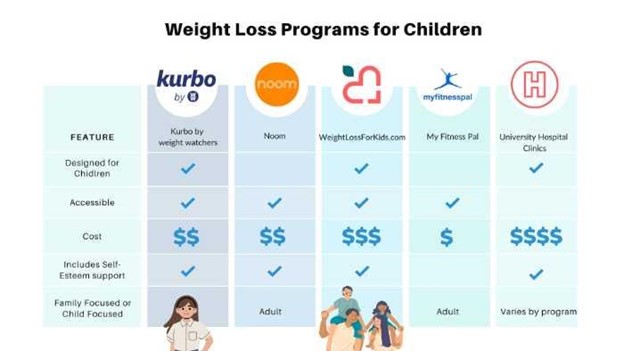All Categories
Featured
Table of Contents
-1
Commanders of armed forces bases should analyze their centers to identify and get rid of conditions that motivate several of the consuming routines that promote obese. Some nonmilitary companies have increased healthy and balanced eating options at worksite dining centers and vending makers. Several publications suggest that worksite weight-loss programs are not really efficient in reducing body weight (Cohen et al., 1987; Forster et al., 1988; Frankle et al., 1986; Kneip et al., 1985; Loper and Barrows, 1985), this might not be the situation for the armed forces due to the better controls the military has over its "staff members" than do nonmilitary employers.
-1Nourishment professionals can give individuals with a base of information that enables them to make well-informed food selections. Nourishment counseling and nutritional administration tend to focus even more directly on the inspirational, psychological, and psychological problems connected with the present task of weight loss and weight monitoring.
-1Unless the program individual lives alone, nutrition monitoring is rarely reliable without the involvement of member of the family. Weight-management programs might be divided right into 2 phases: weight loss and weight upkeep. While exercise may be one of the most vital element of a weight-maintenance program, it is clear that dietary constraint is the crucial part of a weight-loss program that influences the rate of weight management.
-1Hence, the power balance formula may be affected most dramatically by minimizing power consumption. gastric band. The variety of diets that have been suggested is nearly innumerable, yet whatever the name, all diet plans consist of decreases of some percentages of protein, carbohydrate (CHO) and fat. The adhering to areas take a look at a number of plans of the proportions of these 3 energy-containing macronutrients
Surgical Bariatrics

-1
This kind of diet regimen is made up of the kinds of foods an individual usually eats, yet in reduced quantities. There are a number of factors such diets are appealing, yet the primary reason is that the recommendation is simpleindividuals need just to adhere to the united state Department of Farming's Food pyramid.
-1Being used the Pyramid, however, it is necessary to stress the section dimensions made use of to establish the advised number of servings. As an example, a majority of consumers do not understand that a portion of bread is a single slice or that a portion of meat is just 3 oz. A diet plan based upon the Pyramid is conveniently adapted from the foods offered in group settings, including army bases, because all that is required is to consume smaller parts.
-1Most of the research studies published in the medical literary works are based upon a well balanced hypocaloric diet with a decrease of energy consumption by 500 to 1,000 kcal from the patient's usual calorie intake. The United State Fda (FDA) recommends such diet regimens as the "typical therapy" for scientific tests of new weight-loss drugs, to be utilized by both the active agent group and the sugar pill team (FDA, 1996).
-1The largest quantity of weight loss took place early in the studies (concerning the very first 3 months of the strategy) (Ditschuneit et al., 1999; Heber et al., 1994). One study located that females shed much more weight between the third and sixth months of the plan, but men shed a lot of their weight by the third month (Heber et al., 1994).
Lap Band – Subiaco
-1In comparison, Bendixen and colleagues (2002) reported from Denmark that dish substitutes were related to negative end results on weight reduction and weight upkeep. This was not an intervention research study; individuals were complied with for 6 years by phone interview and information were self-reported. Unbalanced, hypocaloric diet plans limit one or even more of the calorie-containing macronutrients (protein, fat, and CHO).
-1Several of these diet plans are released in publications intended at the ordinary public and are typically not created by health and wellness specialists and commonly are not based on audio scientific nourishment concepts. For a few of the nutritional routines of this kind, there are few or no study magazines and virtually none have been studied long-term.
Lap Band – Subiaco
-1The major kinds of out of balance, hypocaloric diets are discussed below. There has actually been significant dispute on the ideal proportion of macronutrient intake for grownups. This research study typically compares the quantity of fat and CHO; nevertheless, there has actually been enhancing rate of interest in the function of healthy protein in the diet plan (Hu et al., 1999; Wolfe and Giovannetti, 1991).
-1The length of these research studies that examined high-protein diet plans just lasted 1 year or much less; the long-lasting safety of these diet plans is not known. Low-fat diet regimens have been just one of the most commonly made use of treatments for obesity for numerous years (Astrup, 1999; Astrup et al., 1997; Blundell, 2000; Castellanos and Rolls, 1997; Flatt, 1997; Kendall et al., 1991; Pritikin, 1982).
-1Outcomes of current researches recommend that fat constraint is additionally beneficial for weight maintenance in those that have actually dropped weight (Flatt 1997; Miller and Lindeman, 1997). Dietary fat reduction can be achieved by counting and restricting the variety of grams (or calories) taken in as fat, by limiting the consumption of specific foods (for example, fattier cuts of meat), and by replacing reduced-fat or nonfat versions of foods for their higher fat equivalents (e.g., skim milk for entire milk, nonfat ice cream for full-fat gelato, baked potato chips for deep-fried chips) (Dywer, 1995; Miller and Lindeman, 1997).
-1Numerous factors may add to this seeming contradiction. Initially, all individuals appear to selectively undervalue their consumption of dietary fat and to lower normal fat intake when asked to tape-record it (Goris et al., 2000; Macdiarmid et al., 1998). If these outcomes reflect the general propensities of individuals completing dietary studies, after that the amount of fat being consumed by obese and, perhaps, nonobese people, is higher than consistently reported.
Weight Loss (Subiaco )
-1They located that low-fat diet plans regularly showed significant weight management, both in normal-weight and obese people. A dose-response connection was also observed because a 10 percent decrease in nutritional fat was forecasted to generate a 4- to 5-kg weight management in a specific with a BMI of 30. Kris-Etherton and associates (2002) located that a moderate-fat diet (20 to 30 percent of power from fat) was most likely to promote weight management due to the fact that it was simpler for individuals to abide by this type of diet than to one that was significantly restricted in fat (< 20 percent of power).

-1
Very-low-calorie diets (VLCDs) were utilized thoroughly for weight management in the 1970s and 1980s, but have actually come under disfavor in recent years (Atkinson, 1989; Bray, 1992a; Fisler and Drenick, 1987). FDA and the National Institutes of Wellness define a VLCD as a diet that offers 800 kcal/day or much less. lap band. Since this does not take into account body size, a more clinical interpretation is a diet regimen that provides 10 to 12 kcal/kg of "preferable" body weight/day (Atkinson, 1989)
-1The servings are consumed 3 to 5 times daily. The main goal of VLCDs is to generate relatively quick weight-loss without considerable loss in lean body mass. To achieve this goal, VLCDs usually give 1.2 to 1.5 g of protein/kg of desirable body weight in the formula or as fish, lean meat, or fowl.
Table of Contents
Latest Posts
Personalized Weight Loss Plan
Surgical Bariatrics
Weight Loss Centre ( Joondalup)
More
Latest Posts
Personalized Weight Loss Plan
Surgical Bariatrics
Weight Loss Centre ( Joondalup)